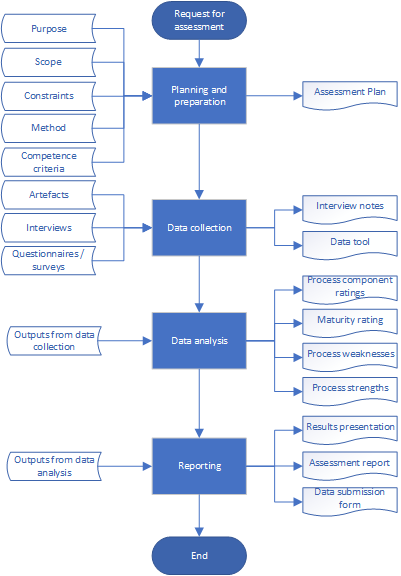Overview of assessment methods
TAMAR stipulates several activities which should take place in an assessment, These usually take place over four main phases.
Typical assessment structure
The diagram below illustrates a typical high-level structure of an assessment process. The main inputs to the process are shown on the left, with the outputs displayed on the right of the related processes.

1. Planning and Preparation
The planning and preparation phase is where all the activities which are required to be carried out prior to the main assessment activity are performed.
These include:
- Agreeing the objectives and scope of the assessment
- Agreeing the plan for activities, including the method being used, what class of assessors are needed, the assessment schedule and any constraints that need to be catered for
- Agreeing the assessment deliverables
- Arranging interviews, and access to buildings, if needed
- Preparing the assessment team
- Preparing the tools to be used.
2. Data Collection
The data collection stage is when the assessment team carries out interviews and gathers other information to support those interviews by means of artefacts of all kinds, questionnaires or surveys.
3. Data Analysis
The data analysis stage is when the information obtained in the collection phase is scrutinised in order to:
- Identify process strengths and weaknesses
- Score process components against the TMMi model
- Produce an overall TMMi Maturity Rating
- Extract information to feed into any other agreed objectives (for example, a process improvement plan)
4. Assessment Reporting
In this phase, the results of the assessment are delivered to the stakeholders. This normally will take the form of a session in which a PowerPoint is presented, followed by a full written report.
The results of the assessment are also submitted to the TMMi Foundation, using the appropriate form and including a copy of the final report.
